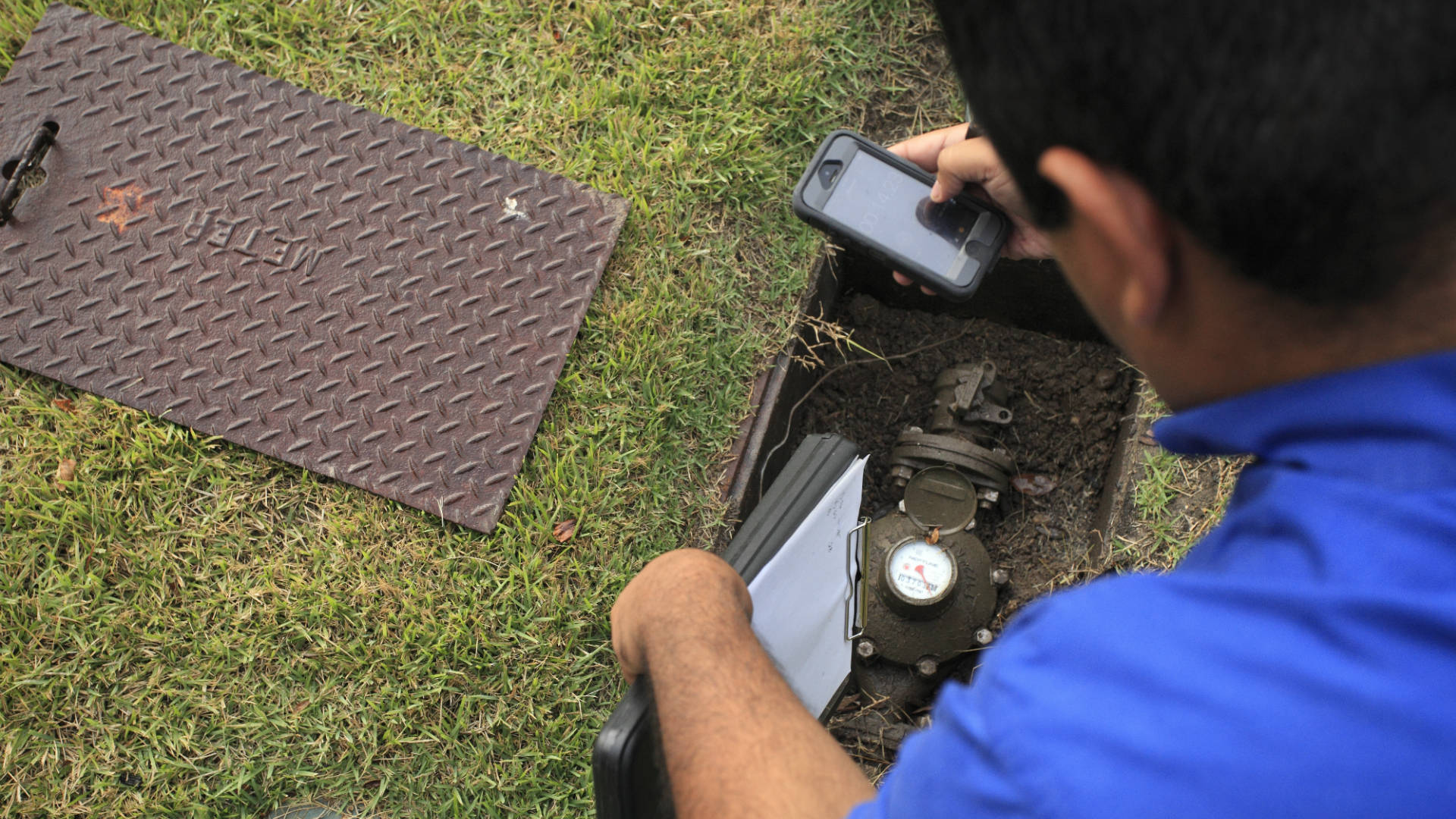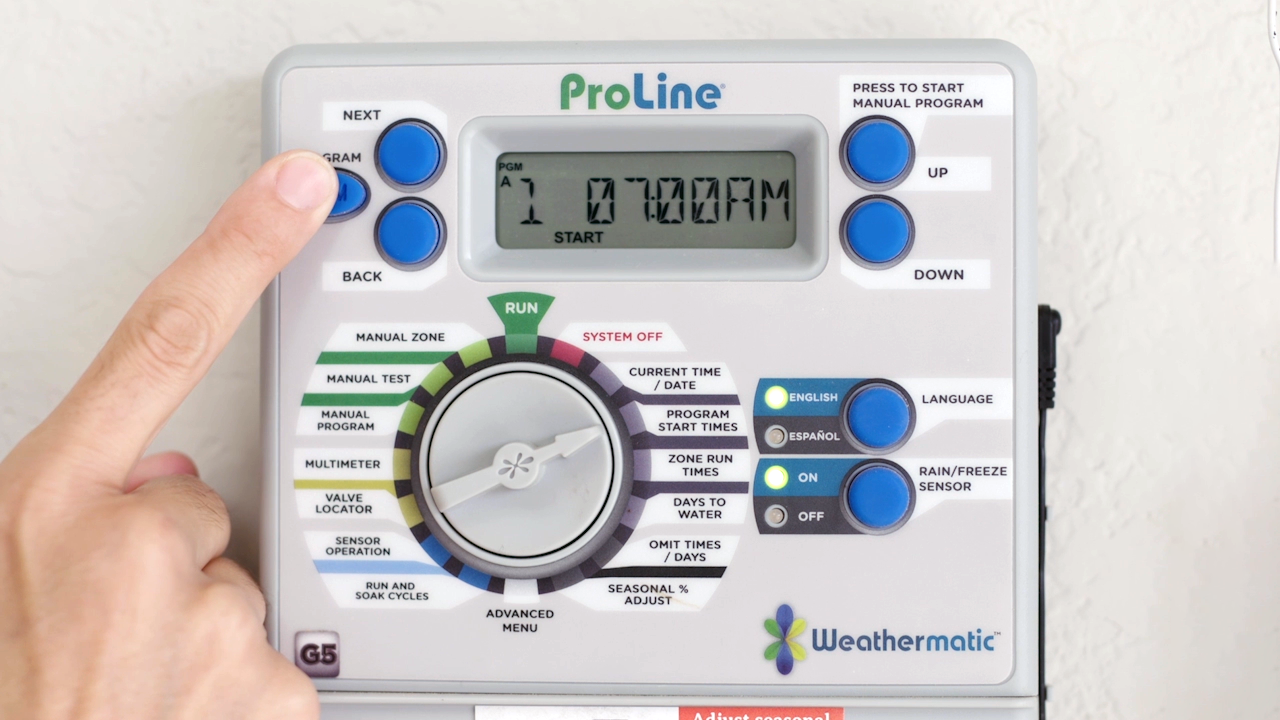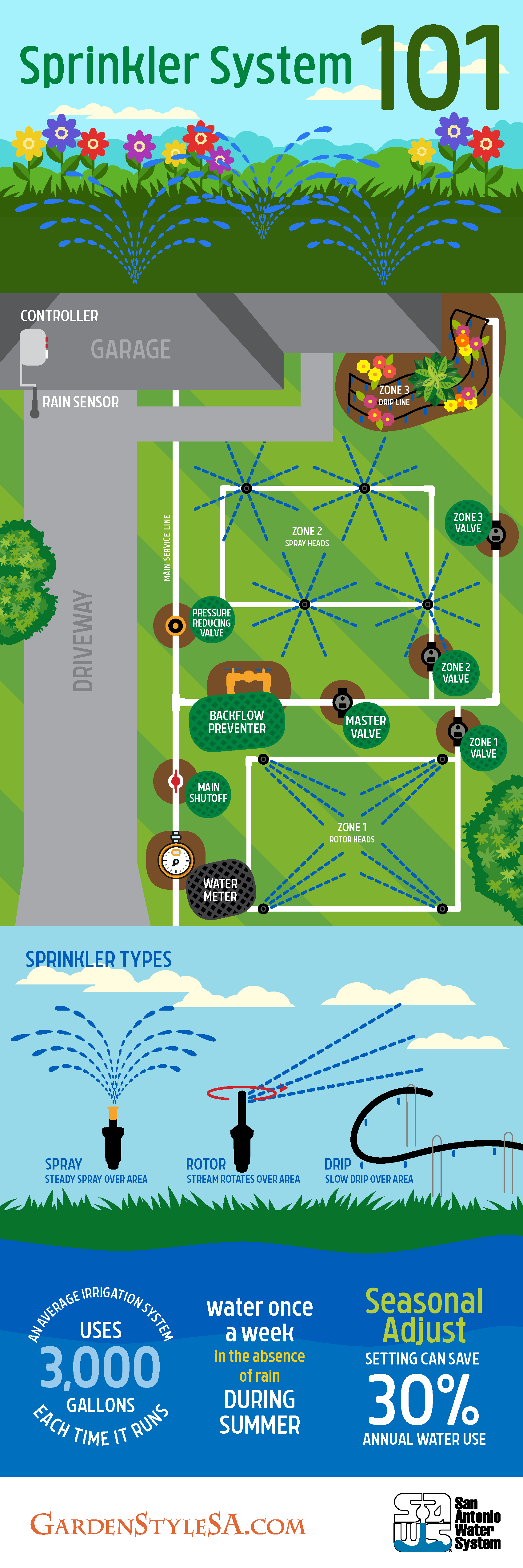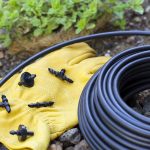Whether you’re a newbie or old pro at in-ground irrigation, these sprinkler system basics will help you avoid getting soaked with a high water bill.
Mysterious green lids in the lawn, a confusing box in the garage or side of your new house, and news of continuing Stage 2 watering rules? Have no fear. This quick guide will introduce you to your new irrigation system and help you learn to manage your water use.
For starters, the average system can use 3,000 gallons of water every time it runs and is often the culprit of an unexpected high bill. Watering just once a week can easily add up to 12,000 gallons of outdoor water use. But on homes with newly or recently installed sod, sprinklers may be turned up much higher.
Water meter
Start here. Your meter is usually found in the ground near the street or alley. You can use it as a leak detector and to get an idea of how much water your sprinkler system uses.

Meet your irrigation system
After the meter, your main water line heads toward your house; your irrigation system will branch off this line before dividing up into section zones.
- Backflow preventer. Many irrigation systems branch off from this point. The backflow prevents contaminants — like pesticides or dog droppings — from flowing back through the sprinkler pipes into the drinking water supply when pressure changes in the pipes. Look for a rectangular green lid.
- Master valve. If you have one, it will be installed after the backflow preventer and allows water into the entire system only when it’s running. It can help prevent water loss if a zone valve gets stuck open after the system runs. It’s often the first round green lid after the backflow.
- Zones (aka stations). Your irrigation mainline pipe comes off the main water line and then branches into several zones that deliver water to specific areas of your yard. Each zone has a zone valve that opens to allow water to flow into lateral pipes with multiple sprinkler heads along them. The zone valves are the mysterious, round green lids in your lawn.Dividing the landscape into zones helps maintain proper pressure. You can see the zones best when you turn on your system, but you might have to walk around if you have drip irrigation.
- Hydrozones. Modern sprinkler systems are usually designed with hydrozones, or areas where the plants have similar water requirements. Turf grass typically needs more water than shrubs and perennials, and sunny areas need more water than shady areas; so often these sections are separated into their own hydrozones so they can be programmed to run separately.
- Sprinkler heads deliver the water and make sure it’s uniformly distributed across the entire zone. Always match the sprinkler heads in a zone as they apply water at different rates. If you don’t, some plants could be drowning while others are still thirsty.Rotors are often used on large areas of lawn and deliver water in a rotating stream or streams of water.
Spray heads are usually used in beds or smaller lawns. They emit a continuous spray of water droplets, so your spray zones don’t need to run as long as rotors.
If your water pressure is so high that you see lots of vapor or mist blowing around, you might want to get pressure-reducing heads which can save water and distribute water more evenly. Don’t lose all your water to evaporation!
Drip irrigation is a series of tubes with small emitters that deliver small amounts of water directly to your plants. They are often found in flower beds. Find out how to do drip correctly.
- Controller (aka the “timer” or “clock”). Your controller tells the system which day to water, what time to start, and how long to water each section. Each zone is wired into the controller, so a quick way to estimate how many zones you have is to look inside and count the little wires. There will also be a common wire and a master valve wire, if you have one.

Watch our Irrigation Controller Basics video to find out how to set your controller and make sure to review San Antonio’s current watering rules.
- Rain sensor. Rain sensors are the little plastic devices on your roof line, fence or another unobstructed location. New versions are wireless, but others are wired all the way back to the controller. When the sensor is working properly, after adequate rainfall your sprinklers will skip the usual watering schedule. City ordinance requires all in-ground irrigation systems to have a rain sensor.
Wise watering
- In general, water once a week, only in the absence of rain; it’s only needed for turf grass during the summer growing season, roughly from April/May to October. Get the most current watering advice based on weather by signing up for our newsletter.
- Set your irrigation controller to water seasonally and you can save up to 30 percent of your annual water use.
- If you see sprinklers running when you’re not expecting them, turn your controller off and run it manually until the settings are fixed. Or hand-water to conserve even more.
- Plant WaterSaver plants that only need to be watered until they’re well-established, and then maybe only a few times during the hottest weeks of summer.
Our expert consultants can help you set your controller correctly and identify targeted changes you can make to your irrigation system to save even more water and money. In fact, cash is on the table for homeowners willing to make permanent changes to their sprinkler systems.





